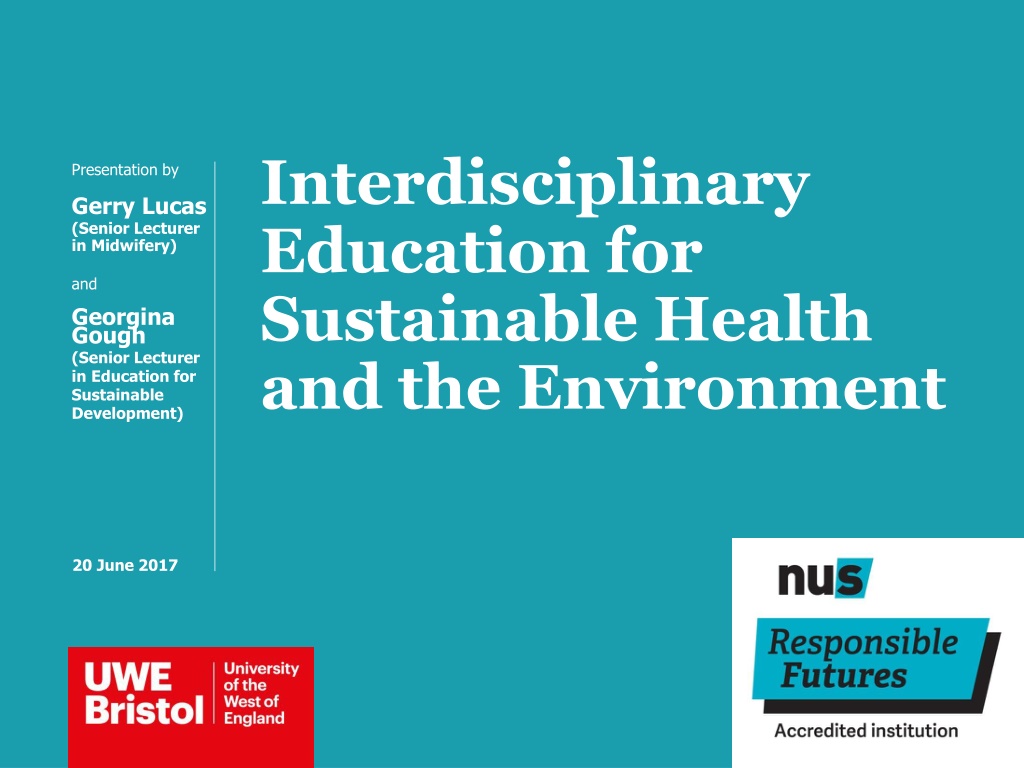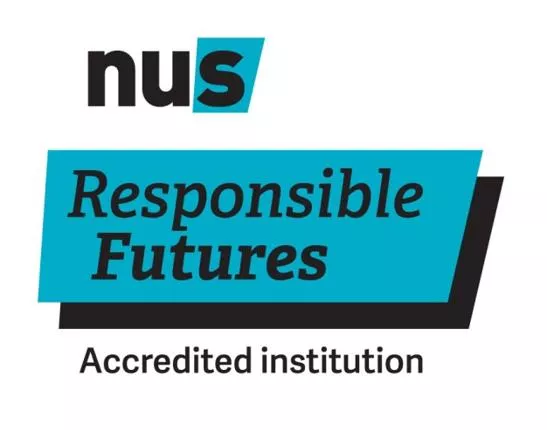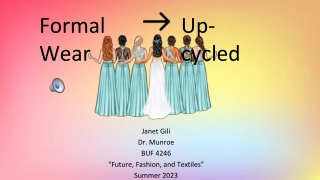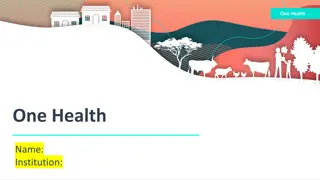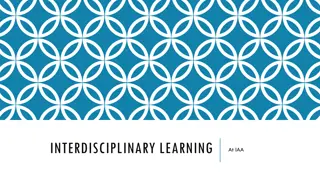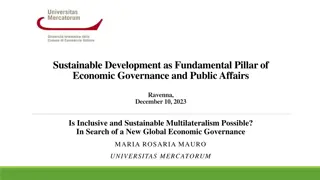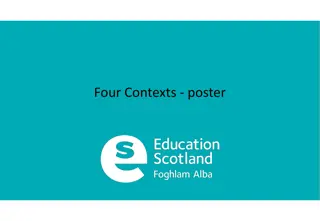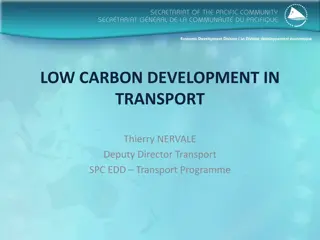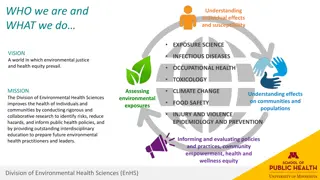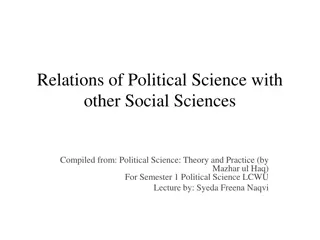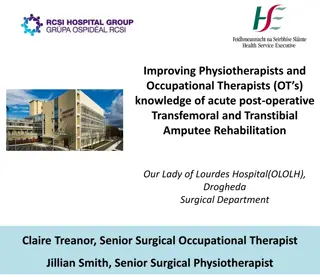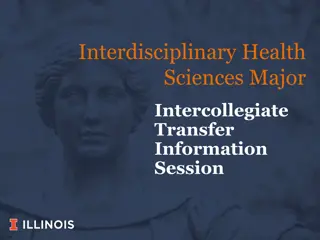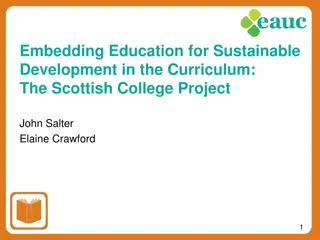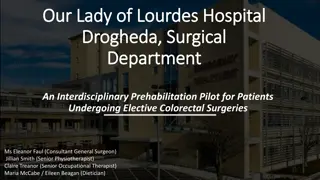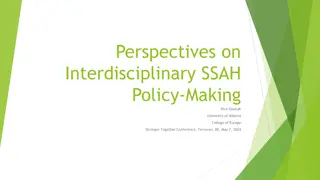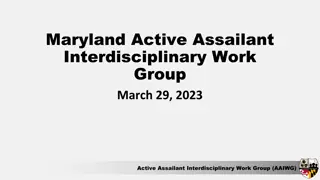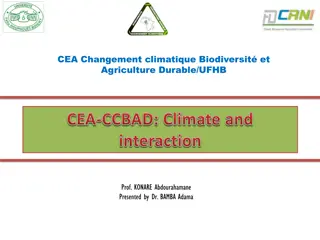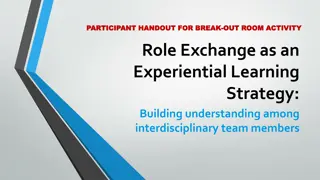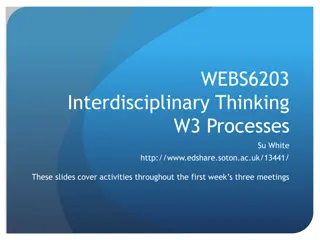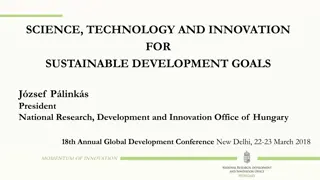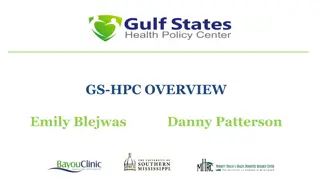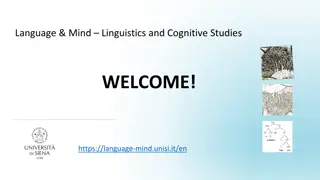Interdisciplinary Education for Sustainable Health
Presentation on interdisciplinary education for sustainable health and the environment, focusing on project context, scalability, replicability, workshop activities, student evaluations, and challenges in midwifery practice. Explore UWE's commitment to sustainability, graduate attributes, UN Sustainable Development Goals, and the intersection of sustainability with healthcare systems like the NHS in England.
Download Presentation

Please find below an Image/Link to download the presentation.
The content on the website is provided AS IS for your information and personal use only. It may not be sold, licensed, or shared on other websites without obtaining consent from the author.If you encounter any issues during the download, it is possible that the publisher has removed the file from their server.
You are allowed to download the files provided on this website for personal or commercial use, subject to the condition that they are used lawfully. All files are the property of their respective owners.
The content on the website is provided AS IS for your information and personal use only. It may not be sold, licensed, or shared on other websites without obtaining consent from the author.
E N D
Presentation Transcript
Interdisciplinary Education for Sustainable Health and the Environment Presentation by Gerry Lucas (Senior Lecturer in Midwifery) and Georgina Gough (Senior Lecturer in Education for Sustainable Development) 20 June 2017
Workshop overview Context for project Outline of project Scalability and replicability: Workshop activity Our experience/reflections and lessons Student evaluation of experience
Context for project Education for Sustainable Development UWE commitment to sustainability and Sustainability Plan Interdisciplinarity Practice-oriented learning Graduate attributes UN Sustainable Development Goals HE as ESD? Sustainability and Health World Health Organisation NHS Sustainable development Strategy and Unit Demand for sustainability-literate students and graduates UN Sustainable Development Goals
What are the Sustainable Development Goals? https://upload.wikimedia.org/wikipedia/en/f/fc/Chart_of_UN_Sustainable_Development_Goals.png
Public Health in England 1.U.K population are living longer, but quality of health is poor 2.Significant inequalities in health still exist 3.Proportional contribution to premature death i. Behavioural patterns 40% ii.Social circumstances 15% iii.Environmental exposure 5% iv.Health care 10% (Public Health England, 2016)
Sustainability in the NHS NHS Sustainable Development Goals: 1: A healthier environment 2: Communities and services are ready and resilient for changing times and climates 3: Every opportunity contributes to healthy lives, healthy communities and healthy environments The proposals are part of an integrated approach to help support progress. (Sustainable Development Unit, 2016)
Challenges for midwifery practice 1.Medicalisation of childbirth 2.Health and well being of staff 3.Promotion of normal birth 4.Desire for ecological parenting 5.Providing continuity of care 6.Increased technology (see Stewart, 2010)
Context for project The project from which this workshop derives uses the UN Sustainable Development Goals as a tool for engaging students in shared discussion about the contribution of professions (in this case midwifery) in creating a more sustainable world. This process enables students to consider the future, to think about their professional responsibilities and to collaborate which helps to prepare them to thrive in the professional world.
Outline of project Project purpose To evaluate the benefits of students working on an interdisciplinary activity in the context of sustainability (and of the benefits of learning in an outdoor setting)
Project elements Project planning: 14 days over 7 months One day event in March 2017 2 staff, students from 2 departments Immediate evaluation: Students and staff Project dissemination Repeat project? Spin off projects?
Overview of one day event 10.00 introduction to project and morning (GL and GG) 10.15 single discipline focus (GL/GG) (outside if weather permits) 10.30 interdisciplinary exchange (groups of 4) (outside if weather permits) 11.30 12.30 development of guidance for a practising nurse or midwife 12.30-13.00 post-activity questionnaire and focus group
Activity 1: Single discipline focus What do you study in your programme? What professional roles might your programme lead you into? GEM: How will you describe/explain each of the SDGs? N&M students: Describe a day in the life of a nurse/midwife (including key challenges)
Activity 2: Interdisciplinary exchange 1. GEM students to explain SDGs (30 minutes). Output is filled in template of SDGs with students explanation of key objective/ targets (final 5 mins = GG presentation) 2. N&M students to outline their disciplinary knowledge, especially professional practice and current key issues/challenges in healthcare (30 minutes). Output is filled in template of SDG issues as relevant to nursing and midwifery (final 5 mins = GL presentation)
Activity 3: Development of guidance for a practising nurse or midwife Prepare an A4 sheet which outlines the SDGs and their relevance to the profession (40 mins) Side 1 = overview of SDGs and headline relevance to profession Side 2 = tips for being more sustainable as a nurse/midwife Each group to briefly present their ideas to rest of group in order to identify the best ideas (both general and day-to- day tips) to be collated into a final project output (20 mins)
Activity 4: Project Evaluation Post-activity questionnaire and feedback Focus group Conference interest? Tuesday 20 June
Sustainability Issues in Midwifery/ Healthcare (as identified by students) Need for social support and acceptance (of need for change and in promoting alternative behaviour of practitioners, of women and of society) Water consumption in practice, esp. water births Inequalities Use of digital technology for administration pros and cons Energy associated with storage of medical products, blood, etc. Transport in healthcare practitioner to patient/client or vice versa? Single use of instruments and materials used for instruments Incineration of contaminated waste
Our experience of running an interdisciplinary, sustainability-focused activity: Reflections and lessons
Immediate post-event reflections Learning outcomes: Sustainable development Meaning of sustainability: understanding by midwifery students evolved over the course of the event. Discussions of resilience, empowerment (of women in childbirth, of midwives to change their practice) and mental health and well-being (in practice and in society) Carbon: Who is responsible for reducing carbon emissions in healthcare sector? How can staff take action? What is source of carbon? Sustainability and priorities: sense that sustainability is seen as an add on, not aligned with core priorities (of a midwife) Hierarchy: Sense of white men in suits dictating a top-down approach to sustainability implementation. It should be everyone s priority.
Learning outcomes: Reflective learning Enquiry-based and problem-based learning was mentioned as enjoyable, exciting and enabling self-directed learning Reflection and perspective: Students commented that they were already thinking about things differently e.g. seeing recycling bins and noticing that they were full and thinking that s good, people are using them . Also considering personal responsibility: I have used this item, I am responsible for ensuring that it is disposed of properly . Students left saying they were buzzing and would continue to think about these issues.
Group dynamics Comparative involvement of different discipline groups: o Midwifery students: Initially a sense of possibly feeling powerless and not having right tools /autonomy to take action o Sustainability students: But you are helping by talking about these issues and keeping the agenda active Different cultural perspectives were explored (possible given cultural diversity of group) Gender of group (all women) seemed to enable the emergence of personal stories of pregnancy and childbirth and breastfeeding Self-selecting group: Sense by researchers that these students are pro-active learners and open to new ideas and experiences (potential limitation). How can they be used as advocates for student involvement in other similar future events? Social outcomes: Being outside brought us together
Interdisciplinarity GEM students seemed to appreciate impact which learning about sustainability issues had on midwifery students and themselves gained a sense of the practical application of sustainability in the context of a specific profession Bottom up: How can innovation be encouraged? Where is there scope for innovative practice to emerge? Will global politics/circumstances force innovation (sustainability in spite of the system not because of it)? Students felt that there should be more interdisciplinary activity within their programme Interdisciplinary academic collaboration: Has enabled greater recognition of overlap in concerns of disciplines. Challenge to identify mutually suitable time to run event. Scale of event was manageable for 2 academics. Number of attendees led to very positive outcomes for staff and students.
Event logistics The event: we had a fixed structure with timings and resources to support but at a number of points, then event took on a life of its own and students frequently wanted to share their thoughts or personal experiences and a discursive exchange took over for a few minutes Difficulty in recruiting student participants: N&M programmes are 40-45 weeks in length, often out on placement, and therefore it is difficult to find times to run voluntary events. Need to embed in curriculum. GEM students (BA and BSc): No willingness from 2nd year students, despite being encouraged by programme leader and lecture. Outdoors context: change helped students to think, but also acted as a distraction to thought. Students wanted a bit more direction e.g. where to go, routes options
The students experience I think this activity should be repeated for every faculty and every subject within that faculty. This is not an exclusive subject/topic of conversation Collaborative and interdisciplinary approaches are key to living/working/dealing with a world with ever increasing population growth and limited available resources I would like to do a similar exercise with professionals. This way you could bridge the gap from education (when you still have high ambitions and innovative plans) to the profession (when you become part of the system). Interdisciplinary projects are extremely beneficial to understanding how different sectors impact on each other . I would like to see this as part of the curriculum to enable students to broaden their understanding and to work effectively . Train and encourage students to lead activities such as these .
Workshop activity: Replicability and scalability How could you develop opportunities for your students to share their knowledge and benefit from interdisciplinary engagement? How can these opportunities enhance a sense of purpose of learning? Do the SDGs offer a useful framework for discussion?
Discussion points Consider the relevance of your discipline to helping to achieve the Sustainable Development Goals (SDGs). What other professions might graduates of your programme need to work with in practice? How are/can students be prepared to work in interdisciplinary teams once they graduate? How might professions associated with your discipline be affected by actions implemented to achieve the SDGs? Who might students be able to learn from to help them prepare for this challenge? How does your practice as an academic feed into these ideas?
Sharing ideas on interdisciplinary activity Strengths Weaknesses Opportunities Threats
Future work Working with NHS to help establish key knowledge and skills needs for healthcare students now Further development of curriculum to facilitate ESD Consideration of sustainability implications of and for T&L Facilitation of further interdisciplinary learning activities Feeding into national developments in midwifery/nursing e.g. NurSus SDG mapping Outdoor learning/Learning outdoors
